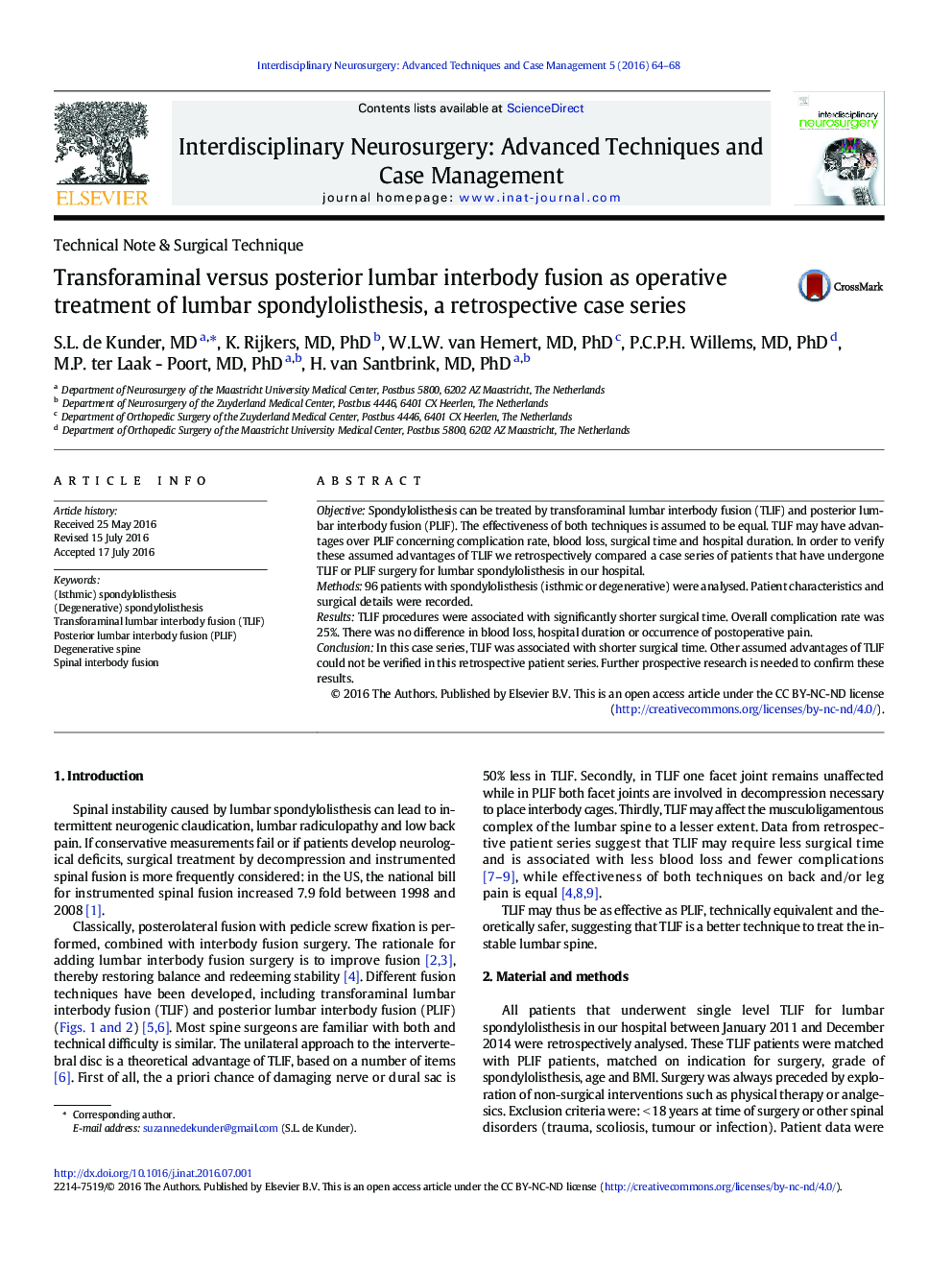| Article ID | Journal | Published Year | Pages | File Type |
|---|---|---|---|---|
| 3057723 | Interdisciplinary Neurosurgery | 2016 | 5 Pages |
ObjectiveSpondylolisthesis can be treated by transforaminal lumbar interbody fusion (TLIF) and posterior lumbar interbody fusion (PLIF). The effectiveness of both techniques is assumed to be equal. TLIF may have advantages over PLIF concerning complication rate, blood loss, surgical time and hospital duration. In order to verify these assumed advantages of TLIF we retrospectively compared a case series of patients that have undergone TLIF or PLIF surgery for lumbar spondylolisthesis in our hospital.Methods96 patients with spondylolisthesis (isthmic or degenerative) were analysed. Patient characteristics and surgical details were recorded.ResultsTLIF procedures were associated with significantly shorter surgical time. Overall complication rate was 25%. There was no difference in blood loss, hospital duration or occurrence of postoperative pain.ConclusionIn this case series, TLIF was associated with shorter surgical time. Other assumed advantages of TLIF could not be verified in this retrospective patient series. Further prospective research is needed to confirm these results.
